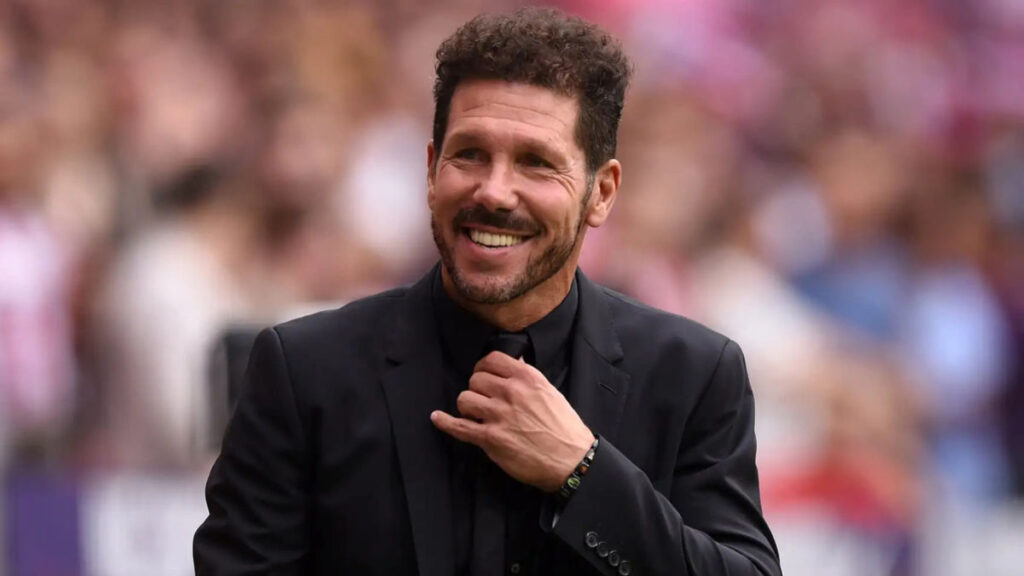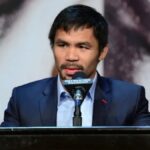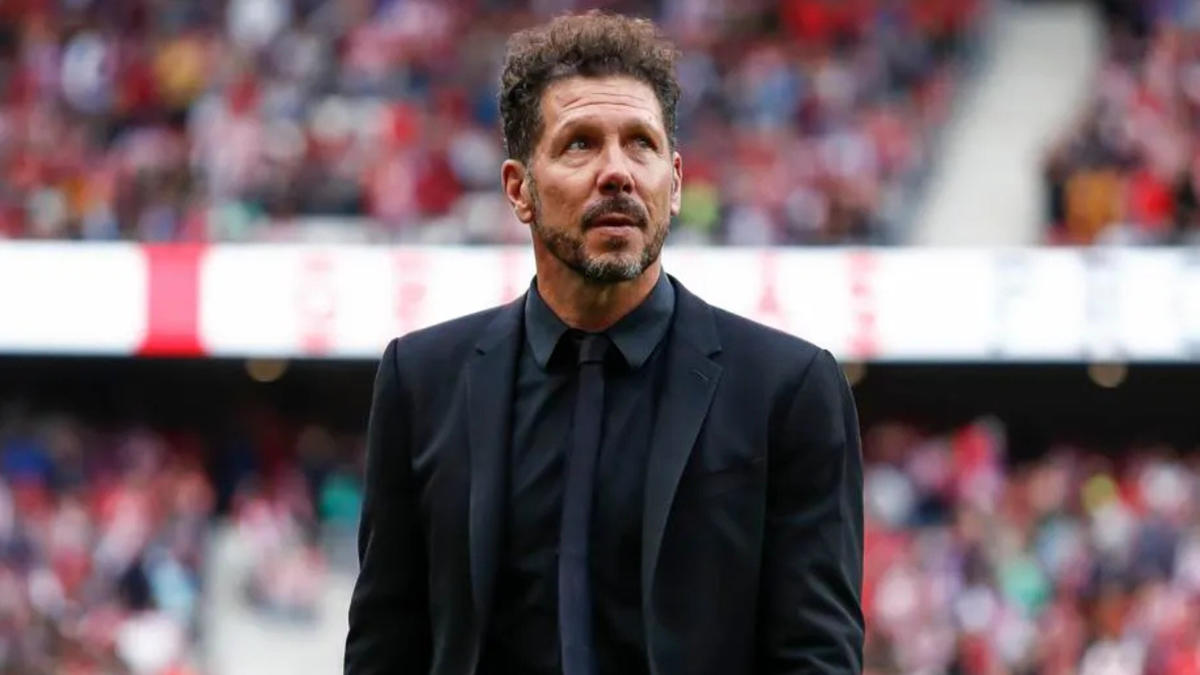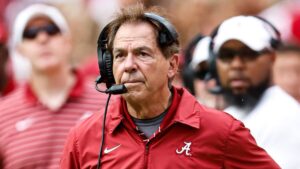Diego Simeone didn’t just rise through the ranks of world football — he redefined what it means to lead from the sidelines. Once known for his ferocious presence as a defensive midfielder, “El Cholo” is now one of the highest-paid football managers on the planet. But his 2025 net worth — estimated to be in the tens of millions — tells a far richer story than contracts and paychecks alone. It’s the culmination of decades spent mastering both the tactical chaos of the pitch and the high-stakes pressure of the modern sports business.
While some managers rely on charisma or legacy, Simeone’s fortune has been carved from sheer discipline, obsessive preparation, and a deep understanding of how to win—with less. From the dusty pitches of Buenos Aires to global football’s biggest stages, his journey is as financial as it is footballing. For fans and entrepreneurs alike, understanding how Diego Simeone built his empire is a study in strategic grit, loyalty, and the undervalued art of staying power.
Counting the Millions — What Is Diego Simeone’s Net Worth in 2025?
As of 2025, Diego Simeone’s net worth is estimated to be $140 million, according to Celebrity Net Worth, placing him among the wealthiest football managers in the world. This staggering figure reflects more than a decade of elite coaching, shrewd contract negotiations, and selective off-field ventures — all built on the foundation of a no-frills, results-first philosophy.
At the heart of his earnings is his long-standing role at Atlético Madrid, where he’s not only the longest-tenured coach in La Liga but also its best-compensated. As of his most recent contract extension — reportedly valued at €15–20 million per year, including bonuses — Simeone has consistently ranked among the top-paid football managers globally. Performance incentives tied to Champions League qualifications, domestic finishes, and Copa del Rey runs add further upside, often pushing his yearly take-home well beyond base salary.
But Simeone’s income portfolio isn’t just limited to sideline tactics. He’s carefully cultivated a brand that appeals to both fans and sponsors. Endorsement deals with sportswear companies and Spanish media appearances supplement his income, though he’s known for keeping his public image tightly controlled.
Real estate investments in Madrid and Buenos Aires, alongside quiet stakes in hospitality and youth academies, have helped Simeone diversify his earnings and protect against the volatility of football management.
Unlike many in the football world, his wealth wasn’t inherited or inflated by flashy endorsements — it was earned, one disciplined season at a time. In the financial game of football, Simeone plays it just as strategically as he does on the pitch.
From Buenos Aires Streets to Global Sidelines: The Origins of Simeone’s Fortune
Diego Pablo Simeone’s journey didn’t begin in luxury or spotlight—it began in the gritty neighborhoods of Buenos Aires, where street football was less a pastime and more a proving ground. Raised in a working-class household, Simeone learned early the values of toughness, resilience, and relentless discipline—traits that would come to define not only his playing style, but his financial trajectory.
By the age of 17, he had made his professional debut with Vélez Sársfield. His tenacity on the pitch caught the eye of European scouts, and in the early 1990s, Simeone leaped to Europe—first to Sevilla in Spain, then on to Inter Milan and Lazio in Italy. His aggressive yet intelligent style of play earned him both trophies and transfer value. Notably, his stint at Lazio brought him a Serie A title and a UEFA Super Cup, achievements that boosted both his reputation and salary.
But it wasn’t just his performance that set him apart — it was his presence. Simeone was known as a locker room general, the kind of player managers trusted and teammates followed. That quiet authority translated into better contracts, bonuses, and leadership incentives. Over a career spanning nearly two decades, he built a foundation of earnings through smart club choices and a knack for maximizing his value without ever being the flashiest star.
These years weren’t just about income — they were about identity. The drive to control a game’s rhythm, to lead under pressure, and to outwork every opponent would become the same mindset he applied to wealth-building later in life. Simeone didn’t stumble into fortune. He fought for it — one match, one transfer, one battle at a time.

Manager, Maestro, Millionaire: The Rise of Simeone the Coach
Diego Simeone didn’t just walk into coaching — he attacked it with the same urgency he showed as a player. After modest beginnings managing in Argentina with Racing Club and River Plate, he took a brief stint at Catania in Italy, where he stabilized a struggling side in record time. But it was his return to Atlético Madrid in December 2011 that would define his legacy — and his fortune.
At the time, Atlético was a club caught between eras, rich in talent but lacking identity. Simeone changed that almost overnight. With a philosophy rooted in defensive organization, relentless work ethic, and emotional intensity, he built a squad that could beat clubs spending twice as much. By 2014, he had led Atlético to a La Liga title — their first in 18 years — and came within minutes of winning the Champions League.
That season didn’t just boost his reputation; it rewrote his market value. Atlético offered him contract extensions with steadily increasing salaries and performance bonuses. By 2019, he was reportedly earning over €40 million per year, making him the highest-paid football manager in the world — more than Guardiola, more than Mourinho. That figure reflected more than just results: it was a premium for loyalty, cultural fit, and brand stability.
Simeone’s ability to consistently punch above his weight — reaching Champions League finals, winning domestic trophies, and keeping Atlético competitive year after year — brought extraordinary return on investment for the club. He became not just a coach, but a strategic asset.
Where others chased big contracts across leagues, Simeone stayed. And that continuity allowed him to build something most managers never do: an empire.
Also See: Top 50 Richest Coaches in the World
Off the Pitch and Into the Portfolio: Simeone’s Business Ventures & Brand Building
For all his fire on the touchline, Diego Simeone’s financial moves off the pitch are defined by something far quieter: precision. Unlike many football icons whose off-field ventures seem like vanity projects, Simeone’s business decisions reflect the same calculated control he demands from his teams — measured, deliberate, and rooted in long-term vision.
Real estate forms the backbone of his private portfolio. He owns high-end properties in Madrid’s affluent Salamanca district, beachfront homes near Punta del Este in Uruguay, and luxury apartments in Buenos Aires. These aren’t sprawling estates flaunted on social media — they’re income-generating assets, often kept under the radar and registered via discreet holding companies. Simeone, ever the tactician, appears to view real estate not as status but as stability.
His investments extend beyond bricks and mortar. In Argentina and Spain, he’s supported youth academies and football training centers — ventures that blend personal legacy with scalable business. He’s also dabbled in the hospitality space, backing a boutique restaurant project in Madrid that quietly draws in football insiders and cultural elites.
On the branding front, Simeone has kept his endorsements selective. Unlike some managers who plaster their faces across every campaign, he aligns only with brands that reflect his values — grit, excellence, and authenticity. Past associations include Adidas and Spanish media networks, but he avoids overexposure. His social media presence is curated, not performative — a signal that his public image is managed as carefully as any game plan.
All of this paints a clear picture: Diego Simeone isn’t just a manager who made money — he’s an investor who made meaning out of it. And like any elite strategist, he knows when to step forward… and when to stay quietly in control.
The Inner Circle: Family Ties and Their Role in His Financial Ecosystem
Behind Diego Simeone’s calculated public persona is a tight-knit family that quietly shapes his personal and financial world. At the heart of it is his wife, Carla Pereyra — a model and entrepreneur whose influence extends beyond aesthetics. Pereyra has helped shape the couple’s public image with intention, balancing elegance with discretion. Together, they project a lifestyle that’s refined but never ostentatious — signaling taste over flash.
Their shared philosophy of stability and privacy is reflected in everything from how they raise their daughters to how they manage wealth. The couple splits time between Madrid and Marbella, favoring low-profile luxury over showy displays. Carla is also known to play a role in real estate and investment decisions, reinforcing the sense that this is a partnership built on mutual trust and strategy.
Simeone’s three sons from a previous marriage — Giovanni, Gianluca, and Giuliano — are each carving out their paths in professional football. As they grow in stature, they extend the family brand into a second generation, hinting at long-term legacy value.
For all his tactical brilliance, Simeone’s most enduring success may be in the cohesion of his inner circle — a unit that’s as deliberate, loyal, and quietly effective as any team he’s ever coached.
Also See: Top 50 Richest Celebrities in the World
“I Don’t Spend to Impress”: Simeone’s Personal Financial Philosophy
“If I don’t need it, I don’t buy it.” That could well be Diego Simeone’s unofficial motto — not just for life, but for legacy.
Unlike many of his peers who indulge in flashy cars and sprawling estates, Simeone lives by a more measured code. He’s been known to stay in the same family apartment in Madrid for years, even after signing multi-million-euro contracts. “Luxury doesn’t motivate me,” he once said in an interview. “Winning does.”
It’s not that he avoids spending — it’s that he doesn’t need to be seen spending. Simeone’s wealth has grown quietly, fueled by loyalty bonuses, long-term contracts, and low-risk investments rather than impulsive purchases or vanity ventures. He’s turned down offers from wealthier clubs more than once — not out of complacency, but conviction. Stability, for him, is a currency of its own.
There’s a kind of old-school discipline to the way Simeone approaches money: earn it, protect it, and never let it become the point. His choices speak of someone who sees financial success not as a reward, but as a responsibility — to his family, to his club, and to the identity he’s spent a lifetime crafting.

How Does Simeone’s Net Worth Stack Up Against His Peers?
In the elite circle of modern football managers, Diego Simeone is a financial outlier — not just for his wealth, but for how he’s earned it. As of 2025, his estimated net worth of $140 million puts him in close company with other giants like Pep Guardiola (approx. $60 million), José Mourinho (around 120 million), and Carlo Ancelotti (roughly $50 million). But the paths they took to build their fortunes couldn’t be more different.
Where Guardiola’s income has come from a blend of high-profile club salaries and lucrative brand endorsements, and Mourinho has chased premium deals across Europe (Chelsea, Inter, Real Madrid, Manchester United, Roma), Simeone has taken the long-game approach. He’s made most of his wealth by staying, by building Atlético Madrid into a perennial powerhouse and renegotiating upward at every turn. His 2019 contract renewal, worth over €40 million per year, made him the highest-paid manager in the world — a feat not matched by anyone who’s changed clubs as frequently.
Then there’s the efficiency factor: Simeone has arguably gotten more return per euro invested than any of his peers. With far fewer resources than Guardiola or Mourinho, he’s delivered La Liga titles, European finals, and brand value that elevated Atlético’s global status.
It’s also worth noting the philosophical difference. Guardiola and Ancelotti exude style and luxury; Mourinho thrives on drama and reinvention. Simeone’s wealth reflects loyalty, consistency, and a kind of managerial monogamy that’s rare in today’s game.
So while he may not always top the trophy count or the endorsement charts, Simeone’s financial standing proves that building a dynasty — not chasing one — can be just as profitable.
What Simeone’s Fortune Says About Modern Football Economics
Diego Simeone’s fortune isn’t just a testament to personal success — it’s a case study in how modern football rewards more than just trophies. In an industry obsessed with instant results, Simeone proves that longevity and loyalty can be just as lucrative as silverware. His enduring presence at Atlético Madrid has become an asset in itself — stabilizing the club’s brand, boosting its international profile, and drawing consistent Champions League revenue.
For years, football’s financial spotlight has focused on players: transfer fees, endorsements, media deals. But Simeone’s trajectory underscores the rising commercial and cultural value of elite managers. Today’s top coaches aren’t just tacticians — they’re brand architects, revenue drivers, and global personalities. Simeone, with his trademark black suit and trademark intensity, is Atlético’s identity. That kind of continuity translates to both sporting performance and business returns.
His net worth, then, isn’t just about what he’s earned — it reflects what he’s built. It shows how trust, culture, and consistency can be monetized in ways short-term strategies never achieve. In the volatile economy of football, Simeone has turned patience into power — and in doing so, helped reshape how we define managerial success in the modern game.
Not Just a Manager, But a Movement
Diego Simeone’s wealth in 2025 is impressive — but the real story lies in how he earned it. Through discipline, loyalty, and a relentless focus on excellence, he transformed not only a football club but an entire model of leadership. He didn’t chase wealth across continents or bend to market trends; he built a legacy through strategic patience, loyalty to Atlético Madrid, and a clear, unshakable identity.
In doing so, Simeone didn’t just become a millionaire — he became a movement. A symbol of how character can be capital, and how staying true to a vision can be more profitable than chasing the next big opportunity. His career is a blueprint not just for aspiring coaches, but for anyone who sees long-term value in doing things differently.
What comes next? Perhaps a transition into executive leadership, broadcasting, or global brand building. Whatever the direction, it’s clear that Simeone’s story isn’t winding down — it’s evolving. And just like his teams on the pitch, you can count on him to make every move count.
Nishant is a digital strategist and celebrity finance analyst with over 15 years of experience in SEO-driven content. As Founder of TheNetWorths.com, he creates high-authority profiles on wealth, branding, and cultural influence.

















1 thought on “Diego Simeone Net Worth 2025: How Atlético’s “Cholo” Built a $140 Million Fortune”